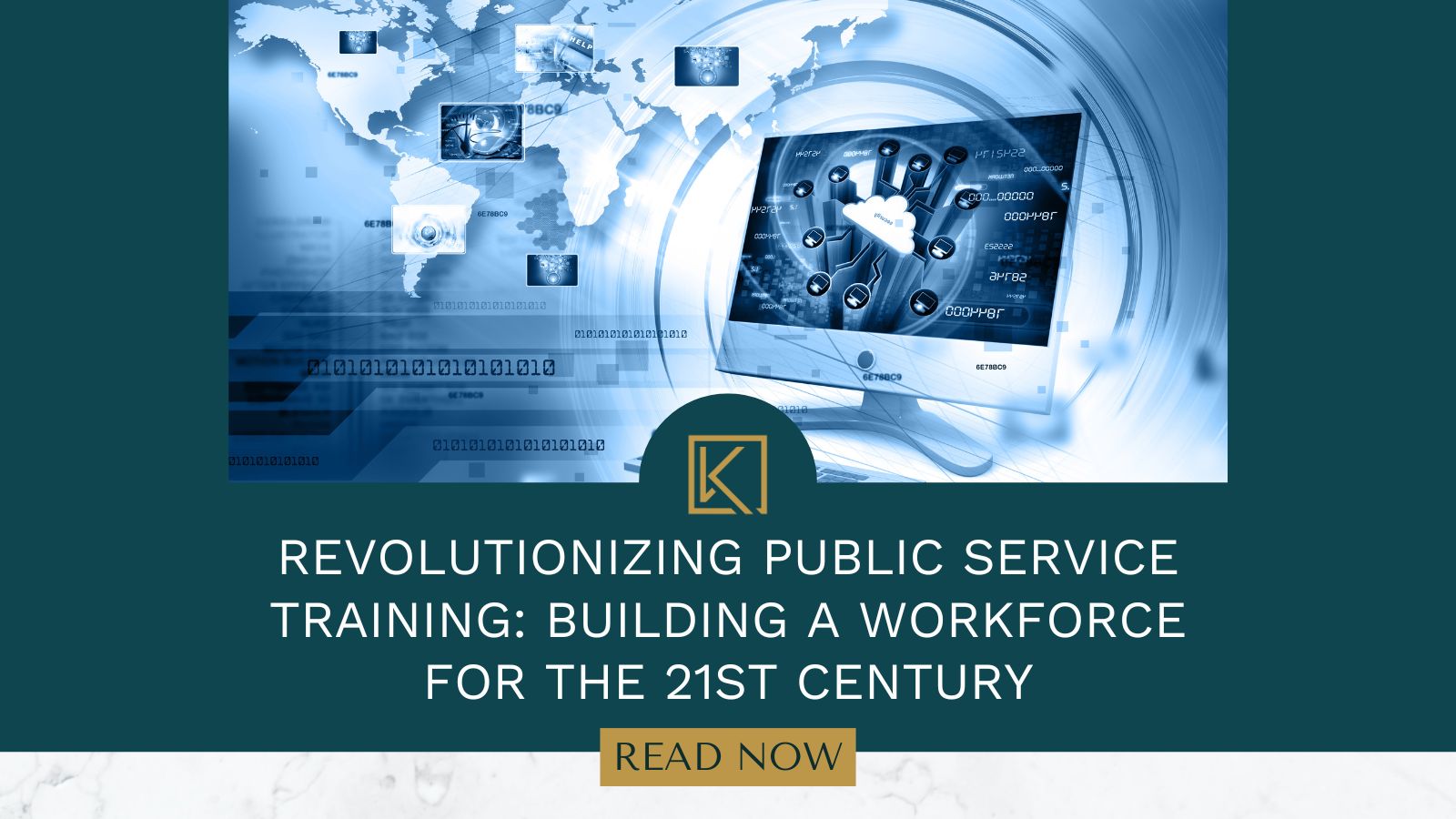Revolutionizing Public Service Training: Building a Workforce for the 21st Century

Public service professionals stand on the frontlines of change, often working in high-pressure environments that demand flexibility, resilience, and a broad skillset. But ensuring that government employees are equipped with the skills needed to meet 21st-century challenges requires more than traditional training programs. It calls for a modern approach—one that combines continuous feedback, human-centered design, and real-time data to drive meaningful results.
In a recent episode of the Kirkpatrick Podcast, special guest Dr. Sydney Heimbrock, a seasoned leader in public service training, joins Vanessa Alzate and Dr. Jim Kirkpatrick to explore how public sector organizations can achieve just that. With insights from her global experiences and her work with Qualtrics, Dr. Heimbrock reveals how the right training and evaluation approaches can help build a prepared, adaptable workforce ready to meet the demands of today’s complex world.
Lessons from the Field: The Need for Adaptable Skill-Building
Dr. Heimbrock’s career began in environments with unique challenges—post-Soviet countries and regions of Africa—where she saw firsthand how skill-building can transform lives and empower communities. Here, training wasn’t just about knowledge; it was about instilling resilience and adaptability. For those in the public sector, this focus on practical skills and readiness has become even more essential. To navigate today’s unpredictable and often volatile environments, employees need to think on their feet and adapt swiftly.
Dr. Heimbrock’s global perspective underscores an important point: workforce development isn’t just about preparing people for current jobs; it’s about equipping them for future demands. Whether it’s training that prepares employees for public health crises, natural disasters, or economic shifts, the right skill-building programs are a key driver of resilience.
Why Continuous Evaluation Matters More Than Ever
Traditional training evaluation methods—sporadic surveys and end-of-program assessments—are no longer sufficient in a world where change happens faster than ever. Dr. Heimbrock emphasizes the need for real-time feedback as a cornerstone of effective training. In her work with Qualtrics, she has seen how tools like automated surveys and real-time analytics can provide an ongoing pulse check, capturing essential feedback during and after training. This feedback loop allows for immediate adjustments that improve learning experiences, keeping them relevant and engaging.
But continuous evaluation does more than improve individual training sessions. It fosters a culture of agility and responsiveness across the organization. When training programs adapt to emerging challenges, they create a workforce that’s not only well-prepared but also empowered to respond to future needs.
Building a Culture of Evaluation: Creating a Feedback-Driven Workforce
Evaluation in training shouldn’t be an afterthought—it should be baked into the process from the start. When public service organizations prioritize continuous feedback, they’re building a foundation for a feedback-driven culture. This approach encourages employees to share their needs, ideas, and challenges openly, creating a supportive environment where training evolves in real time.
Dr. Heimbrock shares that effective training relies on understanding the learner’s journey, anticipating obstacles, and making proactive improvements. It’s a human-centered approach, one that requires empathy and a commitment to listening closely. This feedback-driven culture isn’t just about gathering data—it’s about acting on it in ways that build trust and foster growth within the workforce.
The Role of Technology in Modern Workforce Training
Technology has revolutionized how we gather and act on data in training programs. With tools like Qualtrics, organizations can seamlessly integrate continuous feedback mechanisms that capture learners’ experiences and challenges. Imagine an employee who struggles with a particular module in an online training. A well-designed feedback system could automatically prompt them with helpful resources or connect them with a coach, removing roadblocks in real time and enhancing their learning journey.
This technology isn’t about replacing human interactions but rather enhancing them, making it easier for trainers to understand learner needs, deliver support, and track progress. It’s about designing training that evolves with the learner, making every session more effective and impactful.
Leveraging the Kirkpatrick Model: From Reaction to Real Results
The Kirkpatrick Model has long been the gold standard in training evaluation, especially in public service. By evaluating training at all four levels—Reaction, Learning, Behavior, and Results—organizations gain a comprehensive view of its impact. But as Dr. Heimbrock points out, the Kirkpatrick Model is more than just a set of evaluation steps; it’s a guide for creating training that truly transforms.
At a time when the public sector faces increasing pressures and expectations, the Kirkpatrick Model offers a roadmap for evaluating what works and refining what doesn’t. By applying this model, organizations don’t just measure training—they use insights to drive meaningful improvements and build a more capable, confident workforce.
Bringing It All Together: Real-World Results and the Future of Public Service Training
Training in public service isn’t about checking boxes or fulfilling requirements. It’s about creating a workforce ready to serve in a complex, ever-changing world. With tools for continuous feedback and the Kirkpatrick Model’s proven framework, public sector organizations can take training from a static task to a dynamic, impact-driven process that fosters real results.
As Dr. Heimbrock and the Kirkpatrick Partners team continue their collaboration, the future of public service training looks promising. Together, they’re helping organizations build a workforce that’s agile, capable, and ready to meet tomorrow’s challenges.
LEARN WITH US
If you’re looking for a community that understands your goals and challenges, we’d love to welcome you to the Kirkpatrick Community! Learn more and join here.
Check out the most recent episode of the Kirkpatrick Podcast:
Curious about how the Kirkpatrick Model can enhance your organization’s training programs? Discover the Kirkpatrick Evaluation Toolkit, a comprehensive resource for impactful evaluation. Learn more here.
The Future of Training Evaluation
A successful public service workforce needs trust, active participation, and a commitment to continuous improvement. By embracing modern tools, ongoing feedback, and the Kirkpatrick Model, training becomes a journey that strengthens your workforce and organization.





